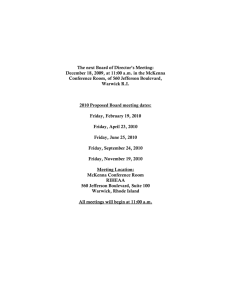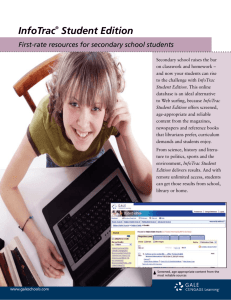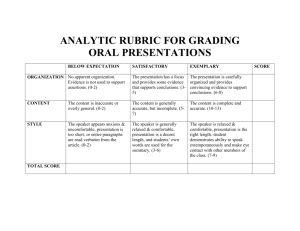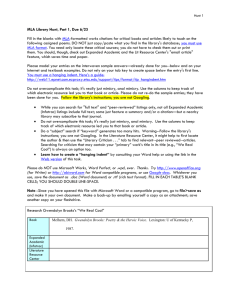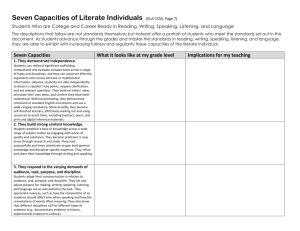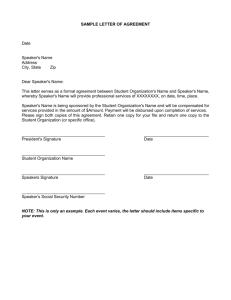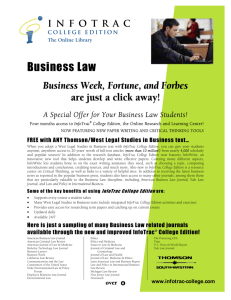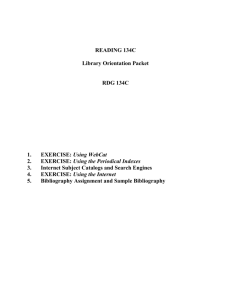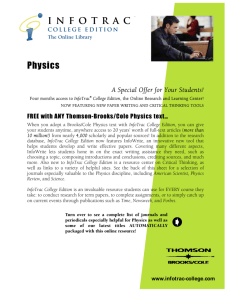CHAPTER 1: Introduction to Public Speaking
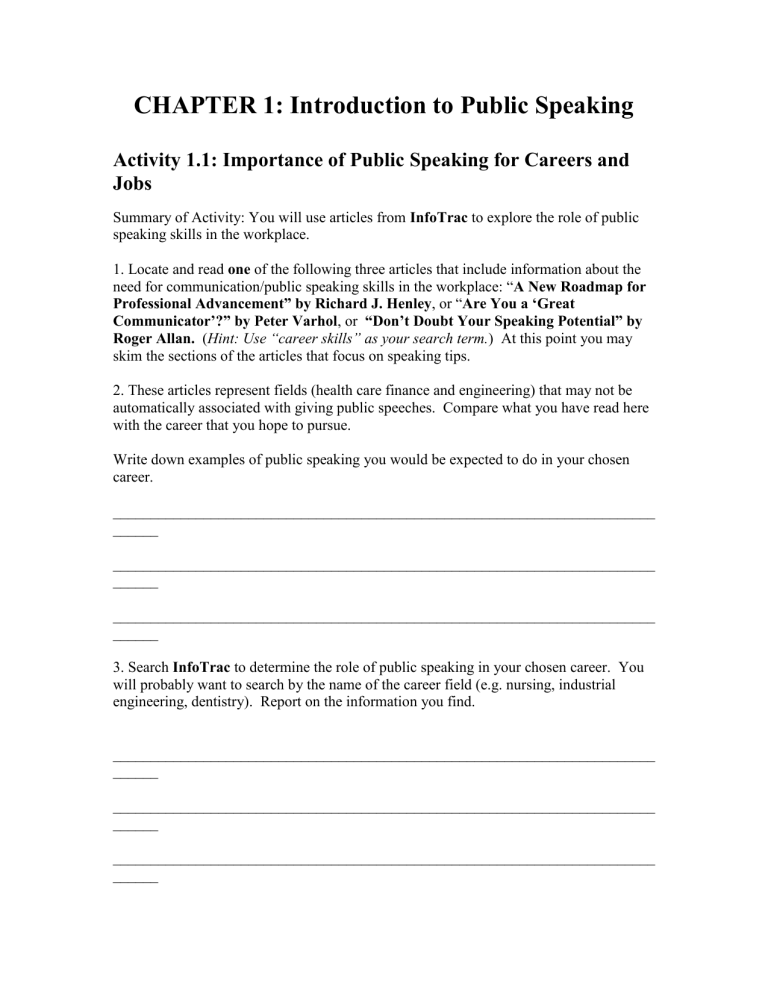
CHAPTER 1: Introduction to Public Speaking
Activity 1.1: Importance of Public Speaking for Careers and
Jobs
Summary of Activity: You will use articles from InfoTrac to explore the role of public speaking skills in the workplace.
1. Locate and read one of the following three articles that include information about the need for communication/public speaking skills in the workplace: “
A New Roadmap for
Professional Advancement” by Richard J. Henley , or “ Are You a ‘Great
Communicator’?” by Peter Varhol
, or
“Don’t Doubt Your Speaking Potential” by
Roger Allan. ( Hint: Use “career skills” as your search term.
) At this point you may skim the sections of the articles that focus on speaking tips.
2. These articles represent fields (health care finance and engineering) that may not be automatically associated with giving public speeches. Compare what you have read here with the career that you hope to pursue.
Write down examples of public speaking you would be expected to do in your chosen career.
________________________________________________________________________
______
________________________________________________________________________
______
________________________________________________________________________
______
3. Search InfoTrac to determine the role of public speaking in your chosen career. You will probably want to search by the name of the career field (e.g. nursing, industrial engineering, dentistry). Report on the information you find.
________________________________________________________________________
______
________________________________________________________________________
______
________________________________________________________________________
______
________________________________________________________________________
______
Activity 1.2: Public Speaking and Culture
Summary of Activity: You will locate and read an article from InfoTrac that tells how an
American Catholic speaker considers the vast cultural differences related to religion and finds, from her own varied cultural experiences, a strategy that reflects rhetorical sensitivity to the diversity of beliefs, attitudes, and values in different cultures around the world. The article will provide a basis for critically thinking about and discussing how speakers’ own cultures influence them and how the cultural backgrounds of the audience influence the speaker’s message.
1. Locate and read the following article: “McKenna Is a Seasoned Practitioner of the
Telling Tale” by Clarence Thomson. (
Hint: Use search term “public speaker.”
)
2. Name either a belief, value, or attitude from the U. S. culture that McKenna points out is contrary to the viewpoints of people from many other cultures.
________________________________________________________________________
______
3. McKenna has been influenced by her cultural experiences in the U.S. as a woman and as a religious and political activist. In the article, find at least one example of where you think her culture influenced what she says.
________________________________________________________________________
______
________________________________________________________________________
______
________________________________________________________________________
______
4. Consider your own cultural background in relation to public speaking. Name subject areas you might speak about in this class that reflect your personal background that probably differ from the background of at least some of the students in your classroom audience. The subject areas may be related to beliefs, values, and/or attitudes.
________________________________________________________________________
______
________________________________________________________________________
______
5. What has McKenna found as a speaking strategy that seems to overcome the boundaries of culture and connect to audience members from different cultures?
________________________________________________________________________
______
6. Why is it important to consider culture when beginning to learn about public speaking?
________________________________________________________________________
______
Activity 1.3: The History and Tradition of Public Speaking in
Education
Summary of Activity: The article from InfoTrac College Edition that is the basis for this activity provides an opportunity to learn more about the long history of public speaking as taught and practiced by students since the time of classical Greece and Rome. The history of extra-curricular speaking such as competitive debate and forensics is intertwined with the history and tradition of classroom public speaking.
1. Locate and read the following article:
“Foreword: A Long and Proud Tradition” by
Ronald F. Reid. ( Hint: Use the search term in PowerTrac “public speaking* and history .”)
2. Notice that in your public speaking text, several reasons or motives for studying public speaking are given. These reasons include both benefits for the society and for the speaker. Compare the motives for studying public speaking in Greek and Roman times with the present day rationales for learning about public speaking. How are the motives different? How are they alike?
________________________________________________________________________
______
________________________________________________________________________
______
________________________________________________________________________
______
3. The article covers a long history of public speaking in education of over 2,000 years.
Although the forms and relative importance of classroom and extracurricular speaking have varied, public speaking instruction and practice have continued to be a part of what the Western World has considered necessary for a “complete” education. Give three reasons why public speaking as an academic subject has endured.
________________________________________________________________________
______
________________________________________________________________________
______
________________________________________________________________________
______
________________________________________________________________________
______
